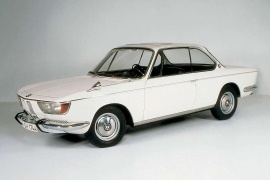BMW 2000 CS Models/Series Timeline, Specifications & Photos
First production year: 1965
Engines: Gasoline
Body style: Coupé (two-door)
In 1959 BMW was facing bankruptcy and was almost bought by its main rival, Mercedes-Benz when the brand was saved by Herbert Quandt, a private investor who saved the brand and took it to the next level.
By 1965, the German brand was on its path to success after launching the "Neue Classe" (New Class) in 1962 with the introduction of the 1600 model, which evolved into the 2000 model, a four-door sedan. But the lineup was not complete yet, so, in 1965, BMW introduced a two-door hard-top vehicle based on the same platform as 2000: the 2000 coupe built by Karmann. It was available in two versions: the 2000 C and the 2000 CS, the latter being more powerful.
The new model sported the unique front fascia with the renowned BMW's kidney grille in the middle of the front panel. Its four round headlights were covered by a common glass cover. In the U.S., BMW had to sell the car without that cover due to American regulations. From its profile, the 2000 CS featured the so-called Hofmeister kink, an unusual connection between the C-pillars and the beltline. Yet, the 2000 CS didn't sport a B-pillar when all four windows were rolled down.
Inside, the 2000 offered a pair of bucket seats at the front and a bench for two in the back. Yet, it didn't lack the amenities of a personal luxury coupe, featuring air-conditioning, an AM-FM radio, wood trims, and vinyl upholstery.
Underneath the hood, BMW installed an inline-four, two-liter gasoline engine fed by either a single carburetor to provide 100 PS (98 hp) or by a twin-carburetor setup for the CS version that pushed the power chart up to 120 PS (118 hp).
